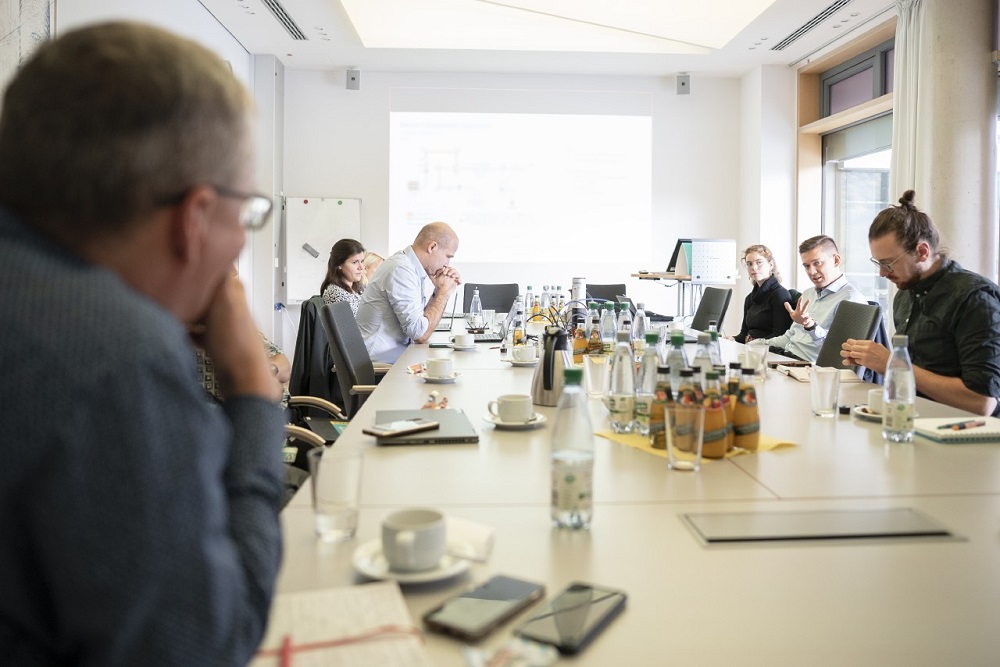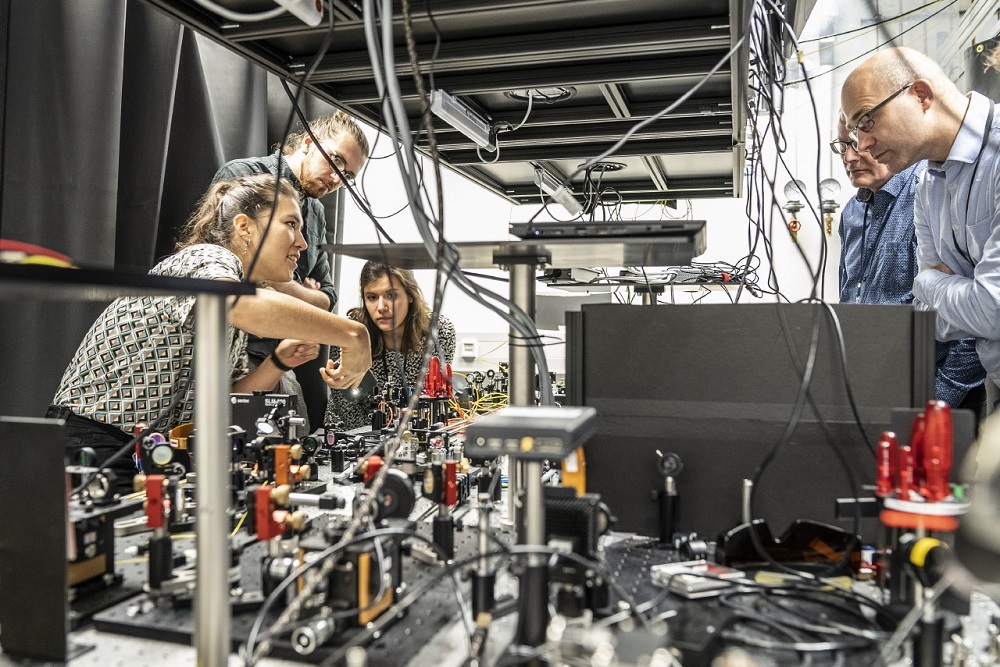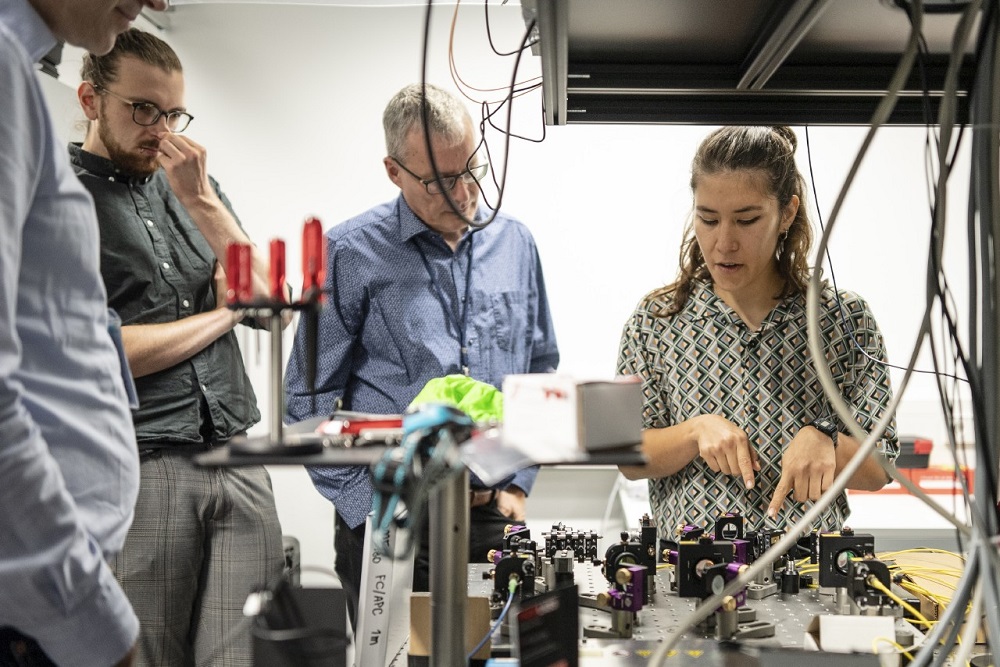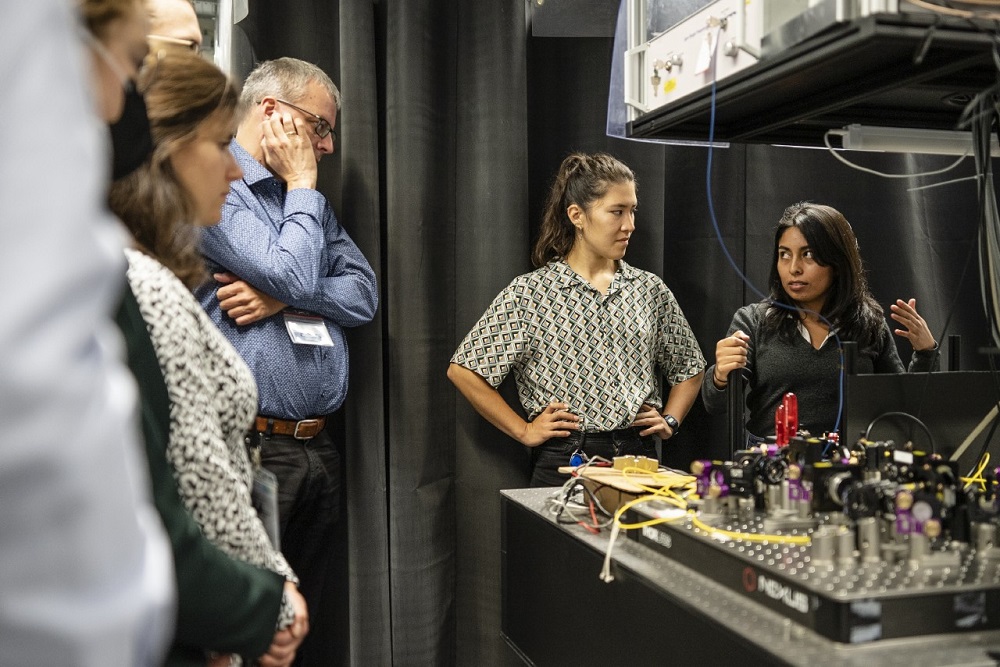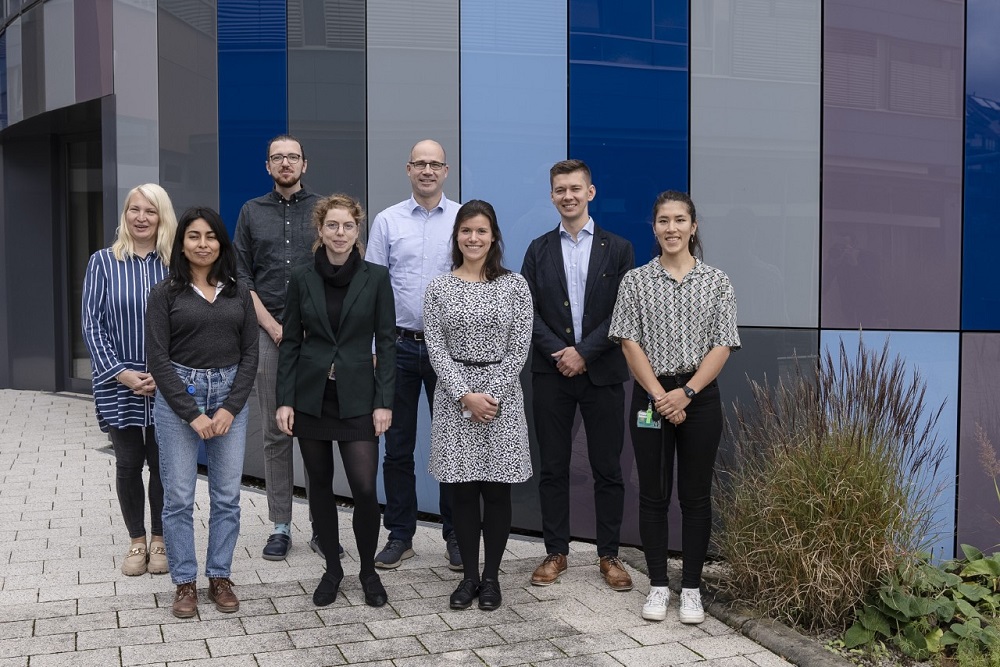Jena (Germany) | October 19, 2022
New wavelength ranges for integrated optics
New research project RAINBOW launched
In the future, integrated optics with even more complex optical functions will open up new fields of application in the areas of sensor technology, communication and quantum technologies. To this end, the research project RAINBOW is investigating how new wavelength ranges can be opened up. The project has now officially started with a kickoff on October 19 in Jena, Germany.
Integrated optics, so-called photonic integrated circuits (PICs), are essential tools in photonics. So far, they have been developed mainly for optical data transmission. However, there are also new, promising fields of application in the areas of sensor technology, communication or quantum technologies. Here PICs must perform increasingly complex optical functions. The aim of the new research project RAINBOW is therefore to open up new wavelength ranges for PICs.
Of particular interest are wavelengths up to the short-wave edge of the visible spectral range at 450 nm. In this spectral range, there are sensor technologies used in a wide variety of fields, such as Light Detection and Ranging (short: LIDAR, 980 nm), Optical Coherence Tomography (OCT, 1060 to 1300 nm) or ultra-sensitive magnetic field sensor technology in medical applications based on NV centers in diamond nanocrystals (637 nm). Medical diagnostic applications also rely on optically detectable biomarkers, which typically fluoresce at wavelengths less than 670 nm.
Highly integrated optics in the spectral range from 450 nm to 1650 nm
The main challenge for the extension of the wavelength range of PICs is to find a uniform material and component basis for the integrated optical key functions. In the RAINBOW project, this gap is to be closed - namely by a hybrid combination of different material platforms. This will fully exploit the potential of highly integrated optics in the spectral range from 450 nm to 1650 nm.
To this end, three key technologies are being advanced: First, the establishment of an integrated optical platform based on new lithium niobate (abbreviated: LN)-on insulator (LNoI) materials. On the other hand, the extension of the spectral range of silicon nitride integrated optical waveguides as well as their hybrid integration with further active and passive components to compact PICs. The aforementioned materials enable the development of this very large spectral range. Hybrid integration also ensures direct connection to established systems based on silicon (Si), indium phosphide (InP) or gallium arsenide (GaAs).
Three demonstrators by the end of the project
As a result of the project, a novel and highly flexible technology platform is to be created. The significantly extended application potential compared to already established approaches will be underlined by three demonstrators that will be developed in the project: First, a chip-integrated frequency conversion for sensor technology, as well as second, PICs for a broadband 50 GHz modulator for data transmission and third, a chip-based frequency comb for metrology.
The RAINBOW project thus addresses target markets for new technologies, components and systems in the field of optical communication as well as space communication, sensor technology and quantum technologies. In addition, further marketing channels are emerging, e. g. in the new field of optical computing.
Cooperation with Fraunhofer HHI from Berlin
The project is being implemented with a volume of three million euros as part of the Fraunhofer PREPARE research program. 1.5 million of this is accounted for by the Fraunhofer IOF. The cooperation partner is the Fraunhofer Institute for Telecommunications, Heinrich Hertz Institute HHI from Berlin.
Fraunhofer HHI is contributing its expertise to the project, particularly related to the realization of high-bandwidth modulators and hybrid integration. Regarding high-bandwidth modulators telecom applications, their indium phosphide (InP) platform is well established for applications in the telecom wavelength band but cannot be used for applications such as sensor technology with wavelengths shorter than 1250 nm. New PIC technologies must be developed for this spectral range. For this purpose, the consortium perfectly combines Fraunhofer HHI's capabilities and market understanding in PICs with Fraunhofer IOF's competencies and market understanding in the fields of sensor technology and quantum technology.
Further information
- Optics Design at Fraunhofer IOF (iof.fraunhofer.de)
- Micro- and Nanostructured Optics (iof.fraunhofer.de)
